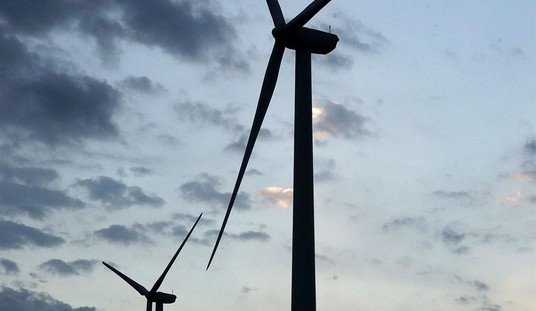Democrats have hailed the CBO estimates of the costs per family of their new cap-and-trade carbon-emissions scheme, which show an impact of only $175 annually. What they don’t tell voters, the Wall Street Journal explains, is that those costs begin to sharply escalate in ten years. Democrats also fail to mention that the cost estimates of the CBO come just from the trading mechanism and nothing else:
To get support for his bill, Mr. Waxman was forced to water down the cap in early years to please rural Democrats, and then severely ratchet it up in later years to please liberal Democrats. The CBO’s analysis looks solely at the year 2020, before most of the tough restrictions kick in. As the cap is tightened and companies are stripped of initial opportunities to “offset” their emissions, the price of permits will skyrocket beyond the CBO estimate of $28 per ton of carbon. The corporate costs of buying these expensive permits will be passed to consumers.
The biggest doozy in the CBO analysis was its extraordinary decision to look only at the day-to-day costs of operating a trading program, rather than the wider consequences energy restriction would have on the economy. The CBO acknowledges this in a footnote: “The resource cost does not indicate the potential decrease in gross domestic product (GDP) that could result from the cap.”
The hit to GDP is the real threat in this bill. The whole point of cap and trade is to hike the price of electricity and gas so that Americans will use less. These higher prices will show up not just in electricity bills or at the gas station but in every manufactured good, from food to cars. Consumers will cut back on spending, which in turn will cut back on production, which results in fewer jobs created or higher unemployment. Some companies will instead move their operations overseas, with the same result.
When the Heritage Foundation did its analysis of Waxman-Markey, it broadly compared the economy with and without the carbon tax. Under this more comprehensive scenario, it found Waxman-Markey would cost the economy $161 billion in 2020, which is $1,870 for a family of four. As the bill’s restrictions kick in, that number rises to $6,800 for a family of four by 2035.
Nor does this take into account regional variations; these numbers are national averages. The bill will decimate the economies of coal-producing areas of the country, hiking unemployment not just from miners and coal-producing power plants but from the entire supply chain of both. Essentially the same areas of the country now reeling from the collapse of the auto industry, the economies of these states will wind up subsidizing the green dreams of coastal liberals.
Will this result in more energy? Supposedly, cap-and-trade will push green-energy producers into mass production. However, no one has a clue whether any of these resources will have that kind of capability even after we start squeezing conventional energy producers out of business. Instead, the White House and Congressional Democrats have taken an approach that crosses Field of Dreams with European failure — If you build the cap-and-trade market, mass-production green energy will come.
How did that work for Spain, perhaps the leading nation for green-energy public investment? Poorly, as George Will reminds us:
The Spanish professor is puzzled. Why, Gabriel Calzada wonders, is the U.S. president recommending that America emulate the Spanish model for creating “green jobs” in “alternative energy” even though Spain’s unemployment rate is 18.1 percent — more than double the European Union average — partly because of spending on such jobs?
Calzada, 36, an economics professor at Universidad Rey Juan Carlos, has produced a report that, if true, is inconvenient for the Obama administration’s green agenda, and for some budget assumptions that are dependent upon it.
Calzada says Spain’s torrential spending — no other nation has so aggressively supported production of electricity from renewable sources — on wind farms and other forms of alternative energy has indeed created jobs. But Calzada’s report concludes that they often are temporary and have received $752,000 to $800,000 each in subsidies — wind industry jobs cost even more, $1.4 million each. And each new job entails the loss of 2.2 other jobs that are either lost or not created in other industries because of the political allocation — sub-optimum in terms of economic efficiency — of capital. (European media regularly report “eco-corruption” leaving a “footprint of sleaze” — gaming the subsidy systems, profiteering from land sales for wind farms, etc.) Calzada says the creation of jobs in alternative energy has subtracted about 110,000 jobs elsewhere in Spain’s economy.
I wrote about this study three months ago. As Will notes in his column, the White House simply dismisses it, rather than rebuts it — perhaps because they can’t.
Waxman-Markey will get a vote, perhaps as early as tomorrow, in the House. Call your Congressman and explain that we don’t want to throw away our economic future for the pleasure of a few statists exploiting an unproven theory as a means to gain control of energy production. This fight, though, will be won or lost in the Senate.








Join the conversation as a VIP Member